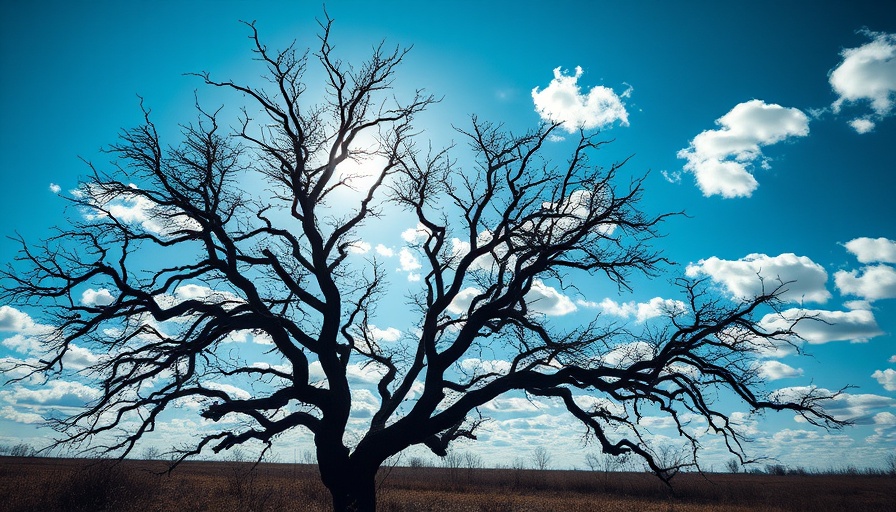
Understanding Ash Dieback: A Growing Concern
Ash dieback is a pressing environmental issue impacting ash trees in the UK and across Europe. Officially known as Hymenoscyphus fraxineus, this fungal disease has devastating effects on unprepared forests, with an alarming potential to decimate ash tree populations. Unlike ash species originating from Asia that have evolved protective features against the fungus, European ash trees (Fraxinus excelsior) lack these defenses, making them particularly vulnerable to this epidemic.
Signs of Ash Dieback: Early Detection is Key
As eco-conscious homeowners, understanding how to recognize the early symptoms of ash dieback in your environment is crucial. The initial indicators include:
Wilting and blackening of leaves and shoots.
Diamond-shaped lesions on branches or the trunk.
Dieback of branches, particularly if healthy ash trees have not fully leafed out by mid-June.
Monitoring these signs during late summer—August and September—provides an ideal window for detection since healthy ash trees are still in full foliage. If you notice these symptoms in your garden, it’s crucial to act promptly to mitigate further spread.
How Ash Dieback Spreads: Understanding Transmission
The spread of ash dieback is primarily due to wind-borne spores that can travel great distances—potentially up to several miles. This characteristic poses unique challenges for controlling the disease, especially as it can be exacerbated by the movement of infected trees. To slow its spread, natural landscaping practices should be prioritized, promoting the health and resilience of the ecosystem around you.
Mitigating Ash Dieback: Strategies for Eco-Conscious Homeowners
Although there is no cure for ash dieback, eco-friendly gardening approaches can aid in preventing its spread and supporting local ecosystems:
Water Conservation: Implement efficient irrigation systems that ensure healthy tree growth, which may foster resilience against disease.
Natural Landscaping: Create a diverse landscape that includes a variety of tree species, thereby protecting against total loss from disease.
Monitoring and Reporting: Maintain vigilance in regularly assessing the health of your ash trees and report suspected cases to local environmental authorities.
Future Predictions: The Resilience of Ash Trees?
Scientific research is ongoing to identify specific genetic traits that could grant resistance to ash dieback. If natural regeneration proves insufficient, scientists are looking into breeding new generations of ash trees that carry these resilient traits. Now might be a good time to consider planting diverse, resistant alternatives or companion species to ash in your gardens, providing a buffer against potential dieback impacts.
The Broader Impact: Why This Matters to Eco-Conscious Homeowners
Understanding ash dieback is not just about the trees; it reflects larger issues of biodiversity and environmental health. Sustainable home design integrates not just energy efficiency and eco-friendly gardening but also the thoughtful interaction with our natural landscapes. By being informed, you contribute to the broader effort of maintaining ecological integrity.
Actionable Steps for Concerned Homeowners
As stewards of our environment, it is incumbent upon us to act. Here are a few practical steps to mitigate the risks associated with ash dieback:
Education: Spread awareness among neighbors and community members about the signs and implications of ash dieback.
Resilient Planting: Consider diversifying your garden by including trees that are not affected by ash dieback.
Community Initiatives: Join local conservation efforts aimed at tackling the impacts of this disease and supporting tree health.
By following these guidelines and remaining vigilant, homeowners can play a proactive role in tackling the ash dieback crisis and preserving our precious woodlands.
Conclusion: Take Action Today!
As ash dieback continues to threaten ash trees across the UK and Europe, it is crucial for eco-conscious homeowners to stay informed and proactive. Your engagement in sustainable home practices can contribute significantly to mitigating this issue. Explore local initiatives or start your projects to support healthy trees in your community.
 Add Row
Add Row  Add
Add 




Write A Comment